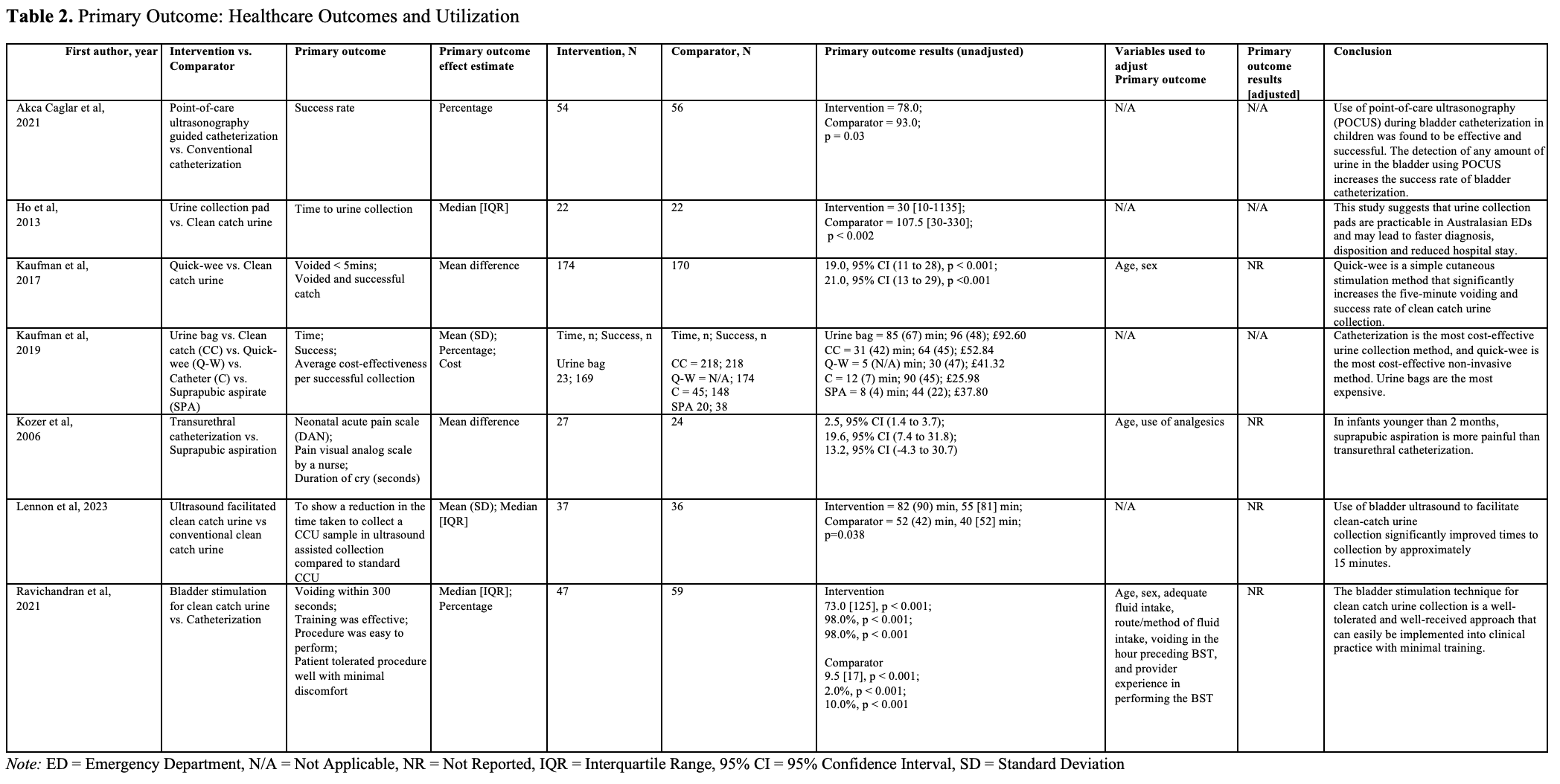Emergency Medicine
Session: Emergency Medicine 4: Infections
112 - Examining the practice variation seen in urine collection methods in pre-toilet trained children: a systematic review
Saturday, May 4, 2024
3:30 PM - 6:00 PM ET
Poster Number: 112
Publication Number: 112.1321
Publication Number: 112.1321

Lucy M. Wilson, MD, MScPH (she/her/hers)
Resident Physician
University of Calgary Cumming School of Medicine
Calgary, Alberta, Canada
Presenting Author(s)
Background: Urinary tract infections (UTIs) are a common cause of acute illness among infants and young children, with a prevalence of 7% in children under two years of age. A urine specimen must be collected to diagnose a UTI. There are numerous methods available to collect a urine sample in children who are not toilet trained, with many different recommendations from national health organizations and societies.
Objective: The primary objective of this study was to examine if practice variation exists in the urine collection methods for diagnosing UTI in non-toilet-trained children and its effects on healthcare outcomes and utilization.
Design/Methods: A systematic review was completed and run in MEDLINE (Ovid), Embase (Ovid), CENTRAL (Ovid), PsycInfo (Ovid), CINAHL (EBSCO), and JBI (Ovid) from January 1, 2020 until October 9, 2021 and then an updated search strategy was performed on May 24, 2023. Searches of clinical trials registries and the grey literature were also conducted. Studies were included if they were conducted in an acute care facility, examined pre-toilet trained children (≤ 3 years), used at least one urine collection method to diagnose a UTI, and compared one urine collection method with another for relevant health care outcomes or provider satisfaction. Studies that were not conducted in English were excluded. Articles that were identified were screened by two independent reviewers, and those included in the final analysis were assessed for quality and bias using the Newcastle-Ottawa Scale.
Results: Overall, 2,584 articles were reviewed and 8 studies with a total of 728 children were included in the final analysis. All studies adhered to the local clinical practice guidelines that were outlined in their study. Seven studies investigated the primary outcome of interest, any health care outcomes associated with the practice variation in urine collection methods used to diagnose a UTI. Studies that investigated novel methods of urine collection concluded that there were improved health care outcomes compared to conventional methods. Three studies which investigated healthcare provider satisfaction found preference to novel methods of urine collection.
Conclusion(s): There is significant practice variation in the practice of urine collection methods within and between countries. Novel methods which are not encompassed by current clinical practice guidelines have beneficial healthcare outcomes and improved satisfaction scores. Further research is needed to better examine practice variation among clinicians and adherence to national organizations and societies.
.png)
.png)

